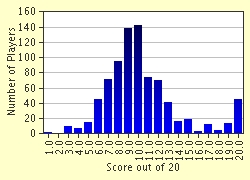Quiz Answer Key and Fun Facts
1. What are comets believed to be made of?
2. Who was the first person to predict the return of a comet?
3. A long period comet is a comet with a period of 200 years or more.
4. Assuming all parts are present in the comet being observed, what is the most prominent part of a comet to the unaided eye?
5. What did the ancient Greeks call comets?
6. In the twentieth century, most comets were named using which convention?
7. What was the name of the 1985 ESA mission to observe Halley's Comet?
8. What country backed out of the mission to Halley's comet, which was originally a joint mission with ESA?
9. The 1985 mission to Comet Halley was ESA's first deep space mission.
10. The Perseid meteor shower is associated with what comet?
11. What comet was visible to the unaided eye from Earth in 1996-7?
12. In what year were comets correctly recognized as members of the Solar System?
13. Which comet has the shortest known orbital period?
14. Who gave Charles Messier his nickname of the Comet Ferret?
15. Who proposed the "dirty snowball" theory about comets?
16. What comet graced Earth's skies in 1965?
17. What was the brightest comet in the 20th Century?
18. In what year is Halley's comet scheduled to return?
19. Is Comet Halley's orbit retrograde around the Sun?
20. Has Comet Halley always appeared every 76 years since it was first seen?
Source: Author
almach
This quiz was reviewed by FunTrivia editor
crisw before going online.
Any errors found in FunTrivia content are routinely corrected through our feedback system.

